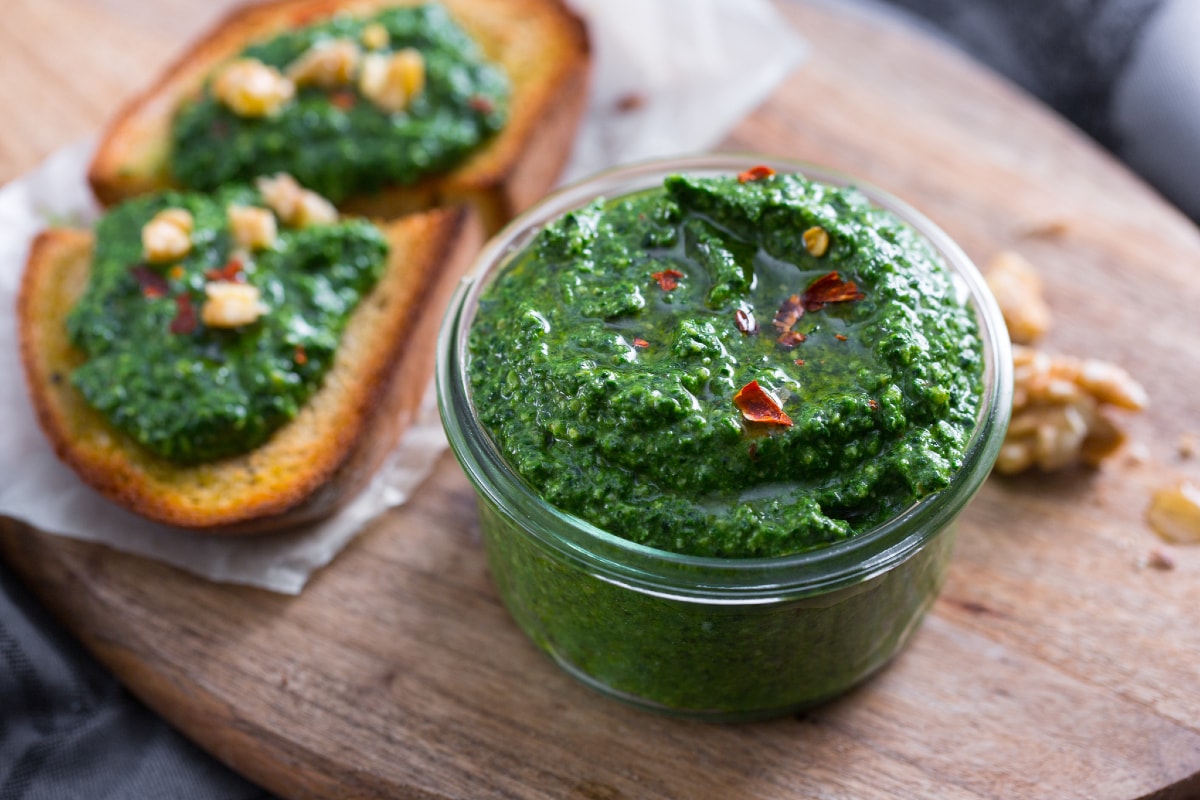Gratinated Fusilloni with Black Kale and Pecorino
- Easy
- 60 min

Kale, numerous properties and endless ways to cook it in winter. But have you ever tried making kale pesto? A delicious winter alternative to the classic Genoese pesto or Sicilian pesto, made with walnuts, grated cheese, and of course good extra virgin olive oil! Creaminess and intense flavor, to spread on a slice of warm bread, to make a pasta with kale more inviting or as a filling for a savory pie! To soften the flavor, we decided to blanch the kale leaves and offer you a version without garlic, but if you prefer, you can prepare it raw and customize it to your taste.
Discover more recipes with kale:

To make the kale pesto, first clean the kale by separating the leaves from the central stem 1. Bring a pot of water to a boil and blanch the leaves for 3-5 minutes 2. Transfer the blanched kale to a blender 3.

Add the grated cheese 4, walnuts 5, salt, and chili pepper 6.

Add 1.4 oz of oil 7 and start blending. While the blender is running, slowly pour in the remaining 1 oz of oil 8. When you achieve a creamy and homogeneous consistency, your kale pesto is ready 9!